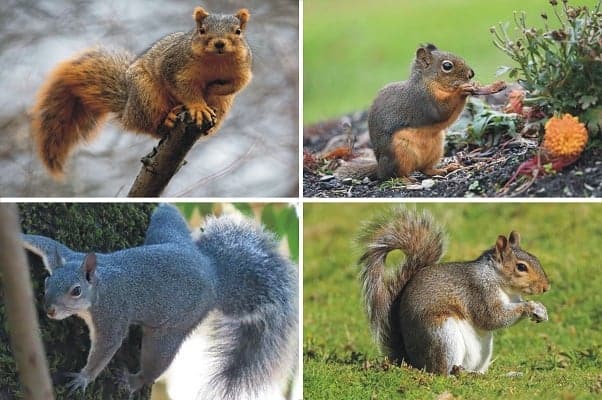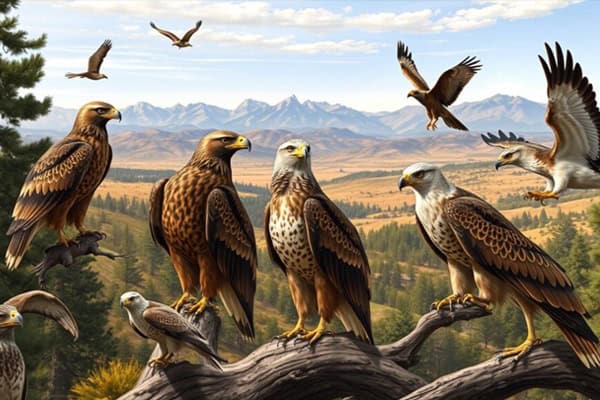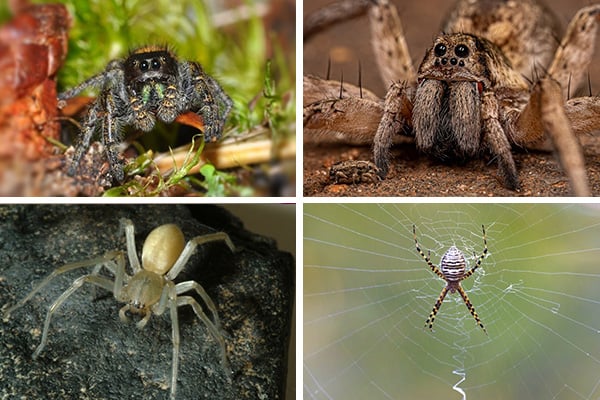5 Types Of Squirrels That Found In California! (2024)
Squirrels might seem adorable with their fluffy tails, but here’s the scoop: they’re most common pests in California. So, what exactly is a squirrel? Well, they’re tiny, furry mammals belonging to the rodent family, with over 273 species worldwide. But in California, only a handful are native.
Transitioning to the trouble they cause, squirrels can be quite destructive. They’ll chew through anything from fruit trees to plastic containers, leaving chaos in their wake. And here’s another reason to keep your distance: they carry fleas that spread diseases.
5 Types of Squirrels in California
California is home to five types of squirrels. Which ones you’ll see depend on where you live. Let’s get acquainted with the squirrels of California.
1. Native Western Gray Squirrels
The western gray squirrel is a type of tree squirrel that lives in many parts of California. You can recognize it by its mostly gray fur on its sides and back, along with its white belly. It also has big ears. What makes it stand out from other squirrels is its long, gray, fluffy tail with white edges.

Moreover, depending on where you are, this squirrel might have different names like Silver-Gray Squirrel, California Gray Squirrel, Oregon Gray Squirrel, Columbian Gray Squirrel, or the Banner-Tail.
Also, because they’re pretty shy, you’re more likely to find western gray squirrels in oak woodlands in foothills and valleys, or in forests with pine and oak trees. However, they’re starting to show up more in towns and cities because their homes are being lost to fires and buildings.
2. Eastern Gray Squirrels
Coming from the eastern parts of the United States, eastern gray squirrels were brought to California, hence their name. Even though they’re not originally from California, these squirrels cause problems as they can easily beat the native squirrels and take their place.
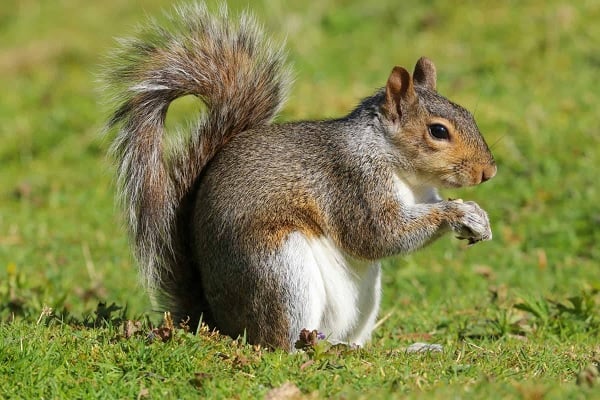
Furthermore, while most of them are gray, some eastern gray squirrels can have a reddish color. They’re medium-sized and have a tail that’s not very wide. Plus, their ears are shorter compared to western gray squirrels.
Moreover, eastern gray squirrels are more aggressive than their western relatives. Unlike western gray squirrels that are shy, eastern gray squirrels are brave enough to come into your backyard. They especially like eating sunflower seeds, so they often visit bird feeders. These squirrels are really destructive and need to be controlled before they take over your yard.
3. Eastern Fox Squirrels

Similar to eastern gray squirrels, eastern fox squirrels were brought over from the eastern part of the United States. They’ve settled nicely in the major cities of California and are the biggest tree squirrels you’ll find in the state. Eastern fox squirrels come in many coat colors, but you can recognize them by their:
- Grizzled yellow-brown (to orange coat)
- Tan (to reddish-brown) underside
- Bright orange-brown ears
Moreover, eastern gray squirrels are super athletic, able to leap up to 15 feet sideways. They’re also expert climbers, which makes it really hard for homeowners to keep them away from the food they’re looking for. Eastern fox squirrels love being around people, so you’ll often see them in cities. Because of this, they’re also really destructive, not to mention the fleas they can give to your pets
4. Native Douglas Squirrels
Meet the Douglas squirrel, also known as chickarees, native to California. You’ll mostly spot them in conifer forests along the northern coast and the Sierra Nevada Mountains. While not considered pests, their noisy antics might bother locals.
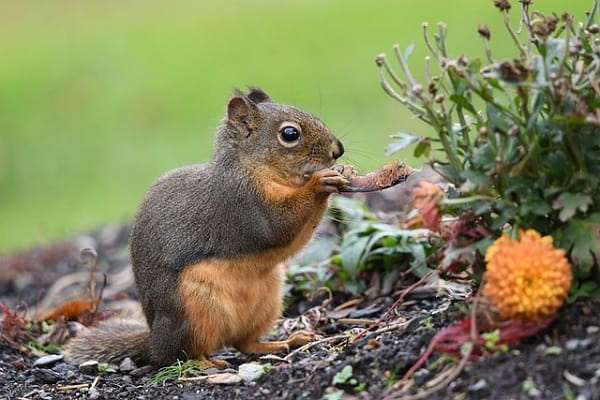
Here’s a neat fact: Douglas squirrels change color with the seasons. In summer, they sport a grayish-greenish coat with a pale orange belly. Come winter, they switch to browns and grays, with tuftier ears.
What’s intriguing about them? They stash their food in the same spot for generations. So, expect to find piles of pine scales in their homes.
5. California Ground Squirrel
Meet the California ground squirrel, also called the Beechey squirrel, a common sight in the state. They stand out with their gray, light brown, and dusky fur, giving them a speckled look on their backs. You’ll notice a darker band of fur streaked with light gray running from their heads down their backs.
What sets ground squirrels apart? They have a quirky habit of storing food in their cheeks for later munching. These critters have a taste for seeds, fruit, and roots, posing a threat to both fruit and ornamental plants.
Check Our Previous Articles
| Turtles Found in California |
| Blue Jay Sign From Heaven |
| Yellow Birds in Colorado |
| Most Colorful Birds Around The World |
Frequently Asked Questions
Q1: What kind of squirrels live in California?
Various types of squirrels live in California, including the native western gray squirrel, eastern gray squirrels, and eastern fox squirrels.
Q2: Are squirrels protected in California?
Yes, squirrels are generally protected in California under state wildlife laws.
Q3: What do squirrels eat in California?
Squirrels in California eat a variety of foods, including nuts, seeds, fruits, insects, and sometimes bird eggs.
Q4: Are squirrels an invasive species in California?
Yes, some squirrel species, such as the eastern gray squirrel and eastern fox squirrel, are considered invasive in California, as they were introduced from other regions and can negatively impact native species and ecosystems
Wrapping Up…
California is home to a diverse range of squirrel species, including 5 types of squirrels. From the tree-dwelling Eastern Gray Squirrels and Fox Squirrels to the native Western Gray Squirrels and Douglas Squirrels, these bushy-tailed creatures can be found in various habitats across the state. Additionally, the unique Humboldt’s Flying Squirrel adds to the rich squirrel population in California. Observing and appreciating these squirrels in their natural habitats can provide a deeper understanding of the local ecosystem.

